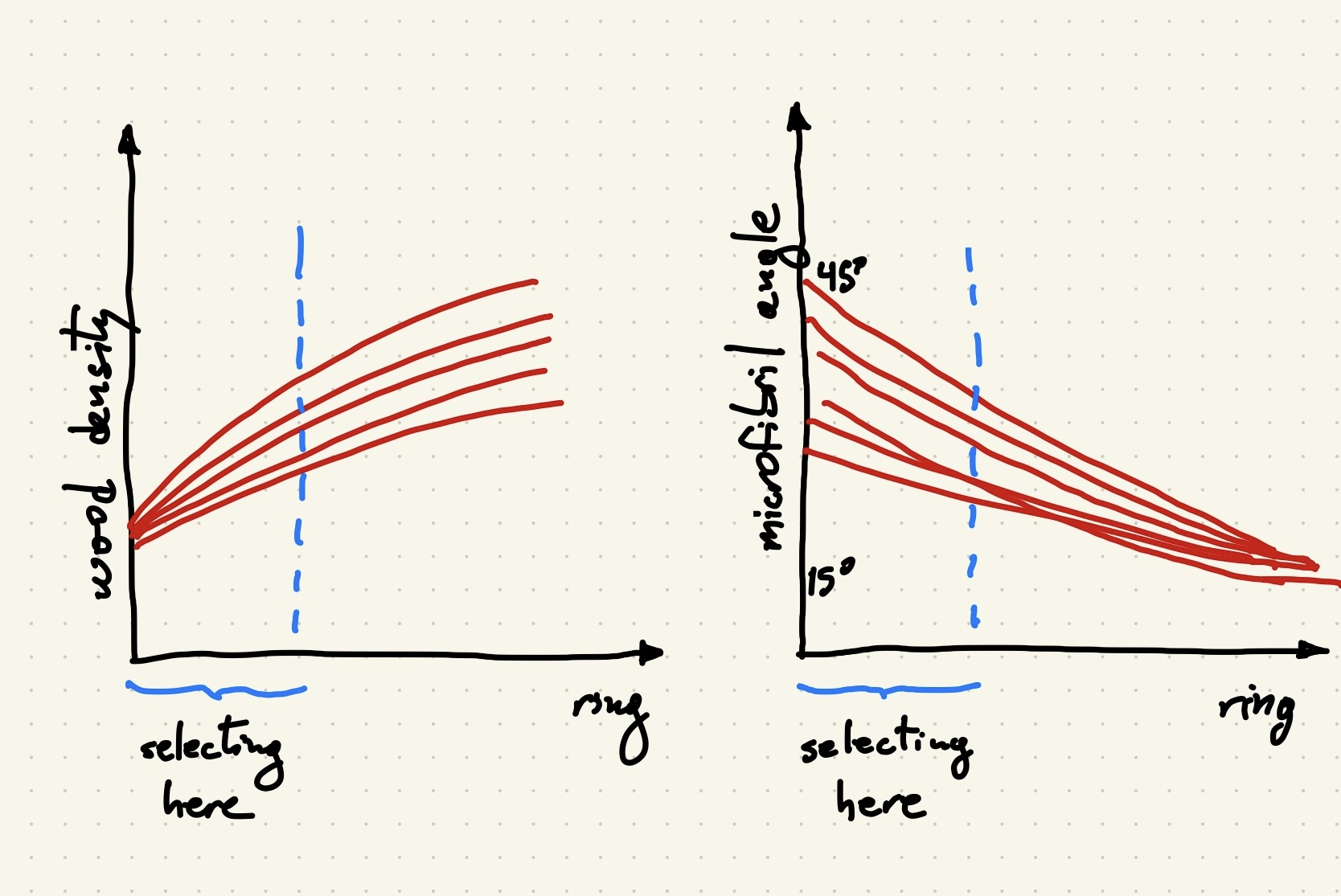Even worse than pedigree errors: selecting for the wrong thing
Imagine this: you have been patiently assessing trees for wood density (selection criterion) thinking that you’re improving wood stiffness (objective trait). Stiffer trees produce stiffer and more dimensionally stable wood, higher value, more profit. Your choice of density sounds reasonable, on average denser wood tends to be stiffer… except that wood is not getting stiffer.
If you look in the literature, wood density is this sort of universal, canonical trait: it is correlated to pretty much everything, it’s easy to assess and highly heritable. However, there is a big problem, as the relationship between density and stiffness changes with age. This points to something important: it is essential to have a good understanding of the traits we want to breed for.
Wood nerdiness: Stiffness depends on the product of density by velocity^2. Velocity is a proxy for the angle of cellulose microfibrils in the secondary cell walls (MFA); the faster the velocity, the lower the angle, a small angle leads to higher stiffness. The variability of stiffness in young trees is dominated by the variability of MFA, while the variability of stiffness in older trees is dominated by the variability of density. This is the root of the problem:
We were selecting for density when to improve the stiffness for the first rings of the trees we needed to select for velocity. Wasted time, wasted effort. On the plus side, trees got denser, which was good news for carbon sequestration. A positive, unintended consequence.
